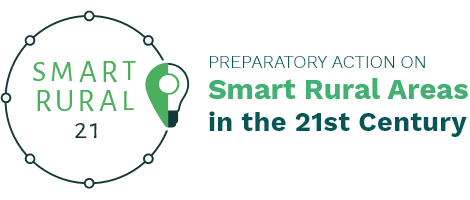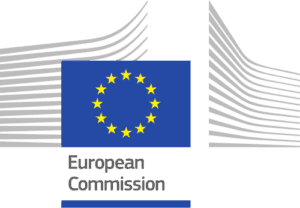Smart Solutions
Local Community Profiling
What is the purpose
| The purpose of this tool is to promote evidence-based and participatory planning. The method helps getting to grips with the community: ‘Who we are and what we envision’. This tool involves marrying data from official sources with local knowledge and insights. Local citizens generally like to hone in on their villages / townlands when looking at demographic / socio-economic maps. In doing so, they tend to engage in conversation – both spontaneously and structurally – with their fellow citizens. Local know-how and expertise allow for an interrogation of data, and local processes can enable communities to derive baselines, signposts and performance indicators. One of the main advantages census indicators offer, for communities, is that the data can be accessed at a local (micro geography) level (including sub-municipalities). In looking at the data for their locality, communities should benchmark their data against those for other comparable geographies – thereby ensuring that their deliberations are well informed. This method can help to bring stakeholders together, especially strengthen cooperation between research organisations (i.e. those who can gather data) and the local community (i.e those who will use /apply the data). Overall, the method can contribute to communities having ownership of the data for their own localities and making more informed submissions to public bodies and funders. |

How does it work?
| The following steps are recommended: 1. Identifying and collecting relevant data including: identify the most relevant variables (what) defining the community’s geographical remit and boundaries (where); and identifying potential sources; 2. Presenting data in a user-friendly way for the community including streamlining and transfering the data to user-friendly modes; 3. Sharing, disseminating and discussing the information through inviting community feedback / responses to the data. 1. Identifying & collecting relevant data In most member states, public bodies are increasingly publishing data on-line, and the amount of open-source data is increasing. These data offer objective and reliable information and ensure that community planning is based on consistent information, rather than anecdotes. Data required may be both qualitative and quantitative. In using quantitative and spatial data, it is advisable to look at trends over time. The chunks of time will probably depend on the parameters of the data available, but inter-generational periods (e.g., 20/ 25 years) help to stimulate conversations, particularly among older people. Longitudinal analysis, rather than a snapshot in time, enables citizens to fully understand the dynamics of their home communities and how their places perform relative to others (in their region and beyond). Finally, the geography to be covered in the profile needs to be considered. Local citizens could be involved in delineating the boundaries. Attention needs to be paid to the fact that community boundaries may not neatly align with administrative / statistical boundaries, and that including data for more than one statistical unit might be needed. It is important to be aware that, due to GDPR / data confidentiality, the scale at which some statistics is published may be limited or restricted. Once the geography is defined and the shortlist of variables is agreed, data holders need to be approached. Among the most accessible and user-friendly sources are the databases derived from the Census of Population. Official data sources include those provided by public bodies and statutory agencies. Thankfully, in the EU, information is becoming more accessible, and public bodies are providing more open-source data. For instance, Ireland’s open data portal provides useful signposts: https://data.gov.ie/ See data collected in the case of Dingle/ Corca Dhuibhne. 2. Presenting data in a user-friendly way for the community Raw data, from the Census of Population and other official sources, usually comes in the form of reports and tables. The reports generally describe the context and overall trends / patterns, while the tables allow users to examine data for particular locations and issues. For many in community groups, the tables can look daunting – especially at first. Therefore, having identified the relevant sources and variables, and having collated data (into manageable chunks), it is advisable to use visuals, particularly graphs, charts and maps. The use of visuals increases the appeal of data and stimulates discussion. Graphs and charts can well demonstrate comparative analysis and help monitoring changes over time (longitudinal analysis). Maps can enable stakeholders to identify and discuss place-specific characteristics and patterns. It is useful to benchmark the community against adjoining municipalities, region and state. This deepens understanding and allows the community to identify potential allies (for development ventures). See sample presentation of Dingle/ Corca Dhuibhne data presentation. 3. Sharing data with the community: Discussion and visioning Presenting visuals will help stimulate dialogue and engagement in community mapping and signposting. The community ownership of the data can be promoted through inviting feedback and questions on the data, including any data gaps. It is important to have multiple meetings (e.g. in the form of round-tables) and engage with a wide range of stakeholders – the broader the feedback and the more diverse the voices, the better the insights will be garnered. Questions to be discussed during these meetings can include: What is the most striking feature in the profile?Did anything surprise you?Are there any omissions?What are the key messages for our community? See Agenda and Questions of the Dingle/ Corca Dhuibhne round-table discussions. In addition to having conversations about your locality, data can be utilised to structure conversations about how local citizens would like their place to be – place-making. In this context, data can be used to undertake visioning exercise and ask questions to set targets: ‘How many x do we want to have in 2025?’. This leads to questions about development trajectories and modes of engagement. Communities should take the data to set baselines and targets. Baseline data allow for monitoring and evaluation. Targets are essential in enabling stakeholders to agree roadmaps, identify partners, broker resources and forge alliances – institutional and spatial. Finally, visuals can be displayed in the media (newspapers and social media) to stimulate inputs from outside the community (including the diaspora) and from those citizens who are unable to attend community consultation events. See sample articles in local newspapers in Dingle/ Corca Dhuibhne. |
Who is the tool/method for?
This tools is primarily targeted at community leaders to add value to their local knowledge and insights and to give them tools with which to structure and focus community engagement, consultations and planning. Understanding their own community, in comparative context, may allow community leaders and their communities to identify other places, which have similar profiles to their own. This can serve to encourage inter-community dialogue and cooperation.
At the same time, the tool could be best implemented through multi-actor cooperation of community leaders / their communities, research and education institutes, and ultimately local public bodies/ policymakers:
It is recommended that communities partner with research and educational institutes to assist in identifying and presenting relevant data, and / or to secure training and capacity building that will enable them to acquire the skills and know-how to understand and utilise public sector databases. Communities can either approach universities / third-level institutes directly, or via their municipality or local LEADER group. Most third-level institutes have personnel who are dedicated to ‘community engagement’, either within the research office or as a specific brief. Sometimes, academics, most notably geographers and social scientists are looking for communities with whom they can partner for research projects. Finally, communities can connect to policy and decision-makers. Communities may request to make special purpose presentations to public bodies, thereby ‘educating’ them about the local-level effects of their policies and practices. This stimulates co-creation of policy, and promotes collaborative evaluation.
Dos and Don’ts
- Don’t bite off more than you can chew – only look for the data you are really going to use. As a community, ask yourselves, ‘what do we already know about our place, and what do we need to know?’. Clarity will help you focus your ‘data fishing/mining’. If there are gaps between your need and your knowledge, focus on filling those gaps. It may be helpful to talk to other communities about the data that can be accessed.
- Be clear in your ask of data-holders. Once you know what you want, make out a list of relevant variables. Avoid asking suppliers (agencies, statistical bodies) for superfluous data. Tell them who you are, why you want the data, and what you are going to do with it. Ensure data providers are acknowledged.
- Do remember that accuracy is paramount. Ensure your data are accurate, accessible, current and comparable (over time and with other places).
- Don’t forget that streamlining raw data requires time. Allow a day for setting-up templates and base maps. Once you have agreed templates and base maps in place, it will be easy to add additional layers of data.
- Do make your data user-friendly – use visuals, such as maps to engage community dialogue. Use maps to enable stakeholders to identify and discuss place-specific characteristics and patterns. Be sure to benchmark your community against adjoining municipalities, your region and state. This deepens understanding and allows you to identify potential allies (for development ventures).
- Don’t be afraid to ask for help. An objective pair of eyes can help, especially with data analysis and visualisation. You can tie-in with an education / research institute to get advice or assistance. In any event, always get a third-party to check your analysis.
- Do share your data with decision-makers. Information is key to good decision-making, and you must be prepared to embed information-sharing into local development processes.
How the tool was already used?
| In the final quarter of 2019 and in early 2020, civil society organisations, members of the business community, private citizens and some statutory bodies participated in an intensive and extensive profiling of the locality in the North East and West Kerry Development (NEWKD) area. NEWKD allocated LEADER funding to enable this project to happen. The NEWKD Board of Directors recognised that the Corca Dhuibhne Peninsula represents a distinctive geography within the LEADER catchment area, and that it merits its own set of actions to support local development there. The Board recommended undertaking a baseline audit of the peninsula’s human capital (including economic and social capital). Following a tendering process, they engaged a researcher to work with civil society groups and NEWKD’s Development Officer in Corca Dhuibhne. Together, under the leadership of a civil society platform (Local Area Advisory Council – LAAC), they organised a series of information and consultation actions, into which community profiling was incorporated. This specific element involved mapping demographic and socio-economic features and monitoring changes over time. The maps and associated statistics were presented in public fora – at community meetings, and they served to inform structured multi-stakeholder roundtable discussions, which took the format of workshops. These crystallised NEWKD’s vision and thinking around smart villages, and they inform much of our content, focus and direction, as outlined here. The workshop deliberations were documented, and discussed at the LAAC. Following a second round of consultations, a final report on the recommendations was presented to the NEWKD Board of Directors. |

